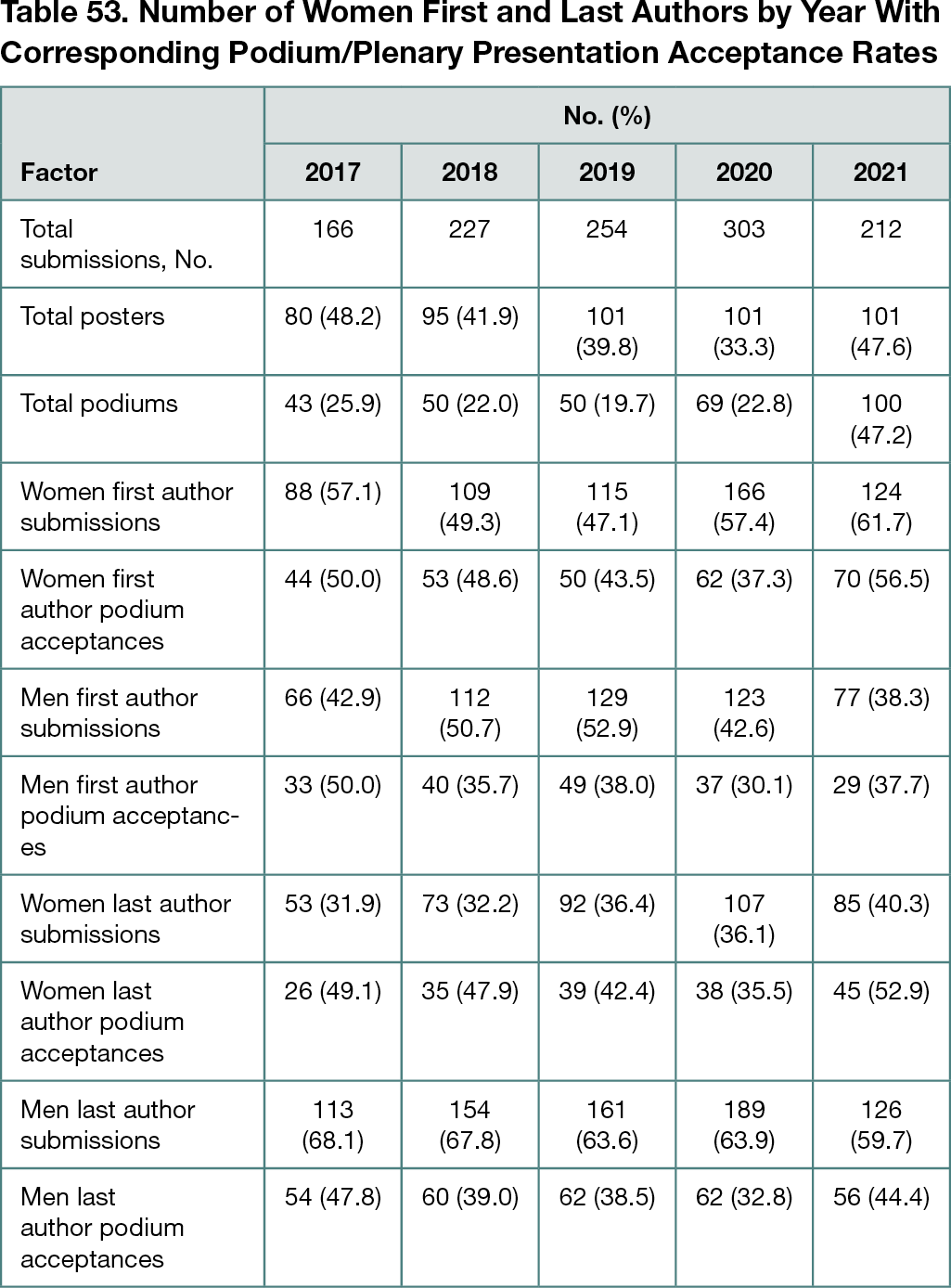Abstract
Analysis of Gender Representation, Authorship Inflation, and Institutional Affiliation in Abstract Acceptance, 2017-2021
Joseph S. Puthumana,1 Iman F. Khan,1 Rafael F. P. Tiongco,1 Siam K. Rezwan,1 Rena Atayeva,1 Jeffry Nahmias,2 Sarah Jung,3 Carisa M. Cooney1
Objective
The goals of this study were to characterize and examine associations of author number, author gender, and institutional affiliation with ratings and acceptances of all abstracts submitted to one surgical education conference.
Design
All abstracts submitted between 2017 and 2021 to the annual meeting of the Association for Surgical Education were retrospectively reviewed. Abstract data included mean rater scores (1 indicates lowest and 7, highest), acceptance status, complete author lists, and institutional affiliations, data to which Association for Surgical Education abstract reviewers were blinded. Last author affiliation was cross-referenced with top 40 National Institutes of Health (NIH)–funded institutions,1 and Gender API2 was used to code first and last author genders. One-way analysis of variance was used to analyze continuous variables, Pearson χ² to analyze categorical variables, z score population proportions to compare submission-to-podium acceptance rates, and Pearson correlation coefficient to assess associations between abstract score and number of authors/institutions.
Results
A total of 1162 abstracts were analyzed. A higher but statistically not significant number of authors per submission was found (4.90 in 2017 to 5.33 in 2021; P = .06), and there was no difference in the number of institutions per submission (1.75 in 2017 to 1.83 in 2021; P = .98) over time. Higher reviewer scores demonstrated positive but weak correlations with more authors (r1160 = 0.191; P < .001) and institutions (r1160 = 0.182; P < .001). Significantly higher scores were noted for abstracts with last authors affiliated with top 40 NIH-funded institutions (4.18 [0.96%] vs 3.72 [1.12%]; P < .001); these abstracts were accepted for podium presentation at a higher rate (42.1% vs 29.7%; P < .001). Abstracts submitted by last authors affiliated with top 40 NIH-funded institutions had significantly more authors (5.46 [2.56%] vs 4.88 [2.42%]; P < .001). Women were first authors in 51.8% (n = 602) and last authors in 35.4% (n = 411) of all abstracts. Abstracts were rated significantly higher with women rather than men as first authors (3.98 [0.99%] vs 3.82 [1.12%]; P = .01) or last authors (4.01 [1.04%] vs 3.82 [1.10%]; P = .005) (Table 53). Across all years, abstracts submitted by women first or last authors were accepted more often as podium or plenary presentations.
Conclusions
Abstracts whose last author had a top 40 NIH-funded institutional affiliation received significantly higher scores, possibly indicating increased tangible or intangible resources contributing to research efforts. This study demonstrated a nonsignificant trend toward more authors over the 5 years studied. Abstracts with women first and last authors were scored higher and were more frequently invited for plenary and podium presentations. While women composed the majority of first authors, women representation as last authors has not yet reached parity but increased over the course of the study despite the COVID-19 pandemic.
References
1. NIH awards by location & organization. National Institutes of Health. https://report.nih.gov/award/index.cfm
2. Gender API. https://gender-api.com/
1Department of Plastic and Reconstructive Surgery, Johns Hopkins University School of Medicine, Baltimore, MD, USA, ccooney3@jhmi.edu; 2Department of Surgery, University of California, Irvine, Orange, CA, USA; 3Department of Surgery, University of Wisconsin School of Medicine and Public Health, Madison, WI, USA
Conflict of Interest Disclosures
None reported.

